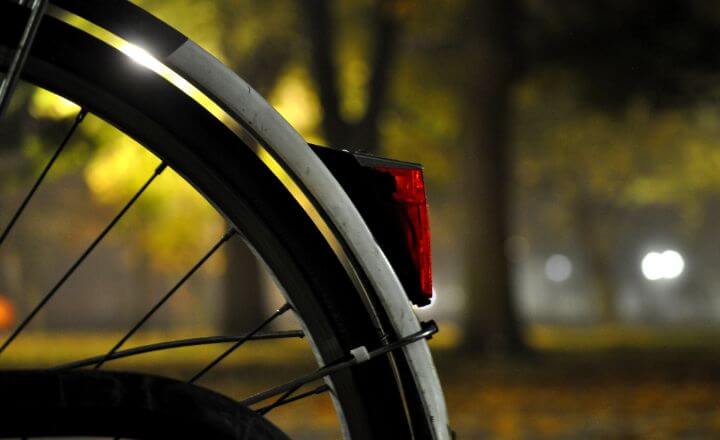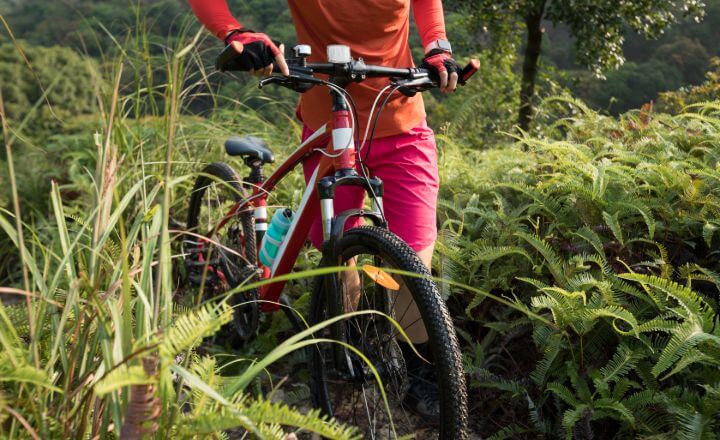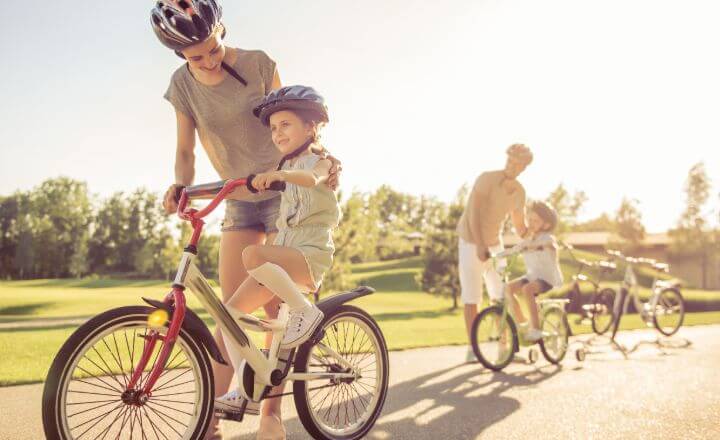(Last updated on January 31st, 2023)
Every bike comes with a preinstalled set of handlebars, but it’s important to double-check if they are the right ones for you. Being familiar with the different types can help you decide between bikes at the time of purchase or when you want to update your handlebars later on.
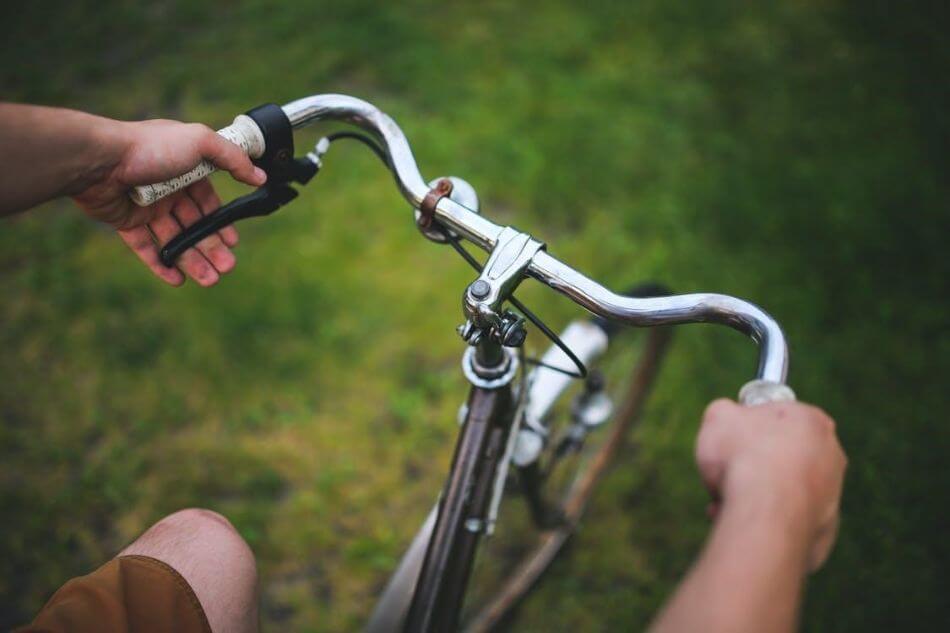
Swapping out handlebars isn’t a very common occurrence, but it can make a big difference to the comfort and control a rider feels on the bike. Keep reading to learn the ins and outs of handlebar shapes and their respective advantages for different kinds of riding.
Why Are There Different Handlebar Shapes?
The various disciplines of road racing, mountain biking, commuting, BMX, etc. place different demands on their handlebars. For example, road handlebars facilitate a much more aerodynamic riding position compared to the upright posture encouraged by mountain bike bars. It can help to think about the following five metrics that make up a handlebar’s overall performance, both its advantages and disadvantages.
Control: the main job of handlebars is to steer the front wheel in a responsive and predictable way
Hand positions: alternating between a few hand positions can reduce fatigue and body strain during long rides
Power transfer: riders can leverage the handlebars to put more power into the pedals, whether it’s in the saddle or standing up
Comfort: an ergonomic shape or angle that’s easy on the hands and arms
Aerodynamics: some handlebars force riders into more streamlined riding positions to reduce air drag
Important Handlebar Measurements
Two of the most crucial details on a handlebar include the overall width and tube diameter. Handlebar width refers to the distance between one side of the handlebar to the other and affects how far apart your hands will be while riding. This measurement is listed in millimeters on mountain bikes and centimeters for road bikes.
Tube diameter is measured at the center of the handlebars where they clamp to the stem. Some handlebars are the same thickness throughout whereas others taper toward the end and thus have their widest point in the middle. If the tube diameter is too big, it won’t fit into the stem and if it’s too skinny, the stem or faceplate won’t be able to clamp down enough on the handlebars. This measurement is measured down to tenths of a millimeter and is typically etched somewhere along the handlebar.
Tip: Measure twice, buy once! Double check the tolerance of your stem and the tube diameter of the handlebar, to ensure they are a perfect match.
Guide to All the Different Handlebars
Explore the comprehensive guide below that walks you through every type of bike handlebars and what they’re used for. You might be surprised by some of the histories and hidden advantages of these handlebars that we typically take for granted.
Flat Bars
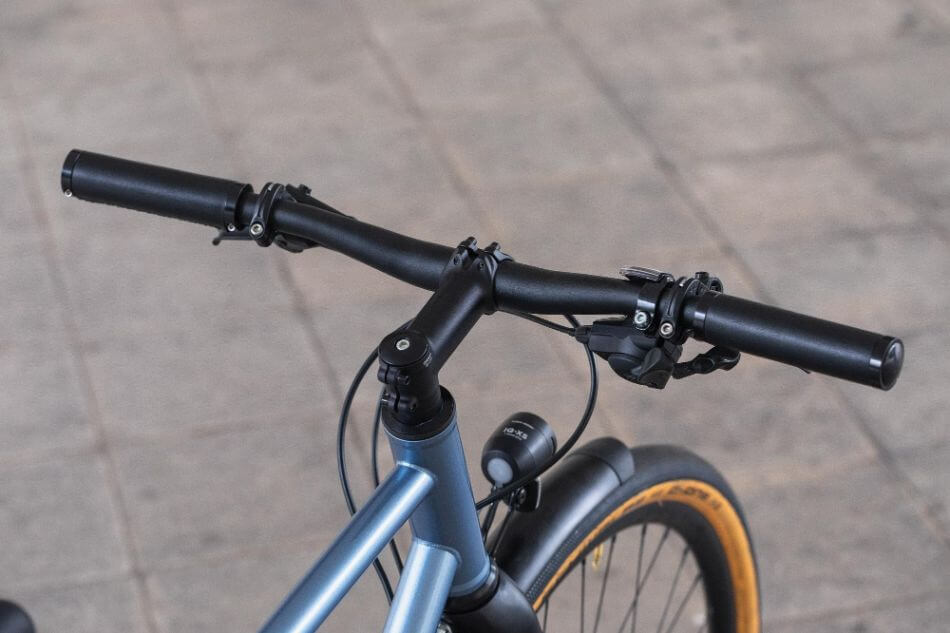
Flat bars are the simplest handlebar design that provides an impressive amount of leverage to navigate technical terrain. Mountain bikes typically come equipped with wide flat bars that easily and quickly turn the front wheel to avoid obstacles or take tight corners.
Flat bars don’t have the extra capabilities that come with handlebars with curves or odd angles such as additional hand positions but are much better suited to tricky terrain. Widths for this type of handlebar vary between 580mm for standard MTBs up to 800mm bars for downhill machines which riders will cut down to their exact ideal width.
Flat bars aren’t only for mountain bikes, however. The straightforward design often comes on entry-level bikes that keep the frills to a minimum and can be seen on some urban bikes as well. Flat bars really are flat— as you will see, there are many variations on flat-ish handlebars that actually make up their own category.
Riser Bars
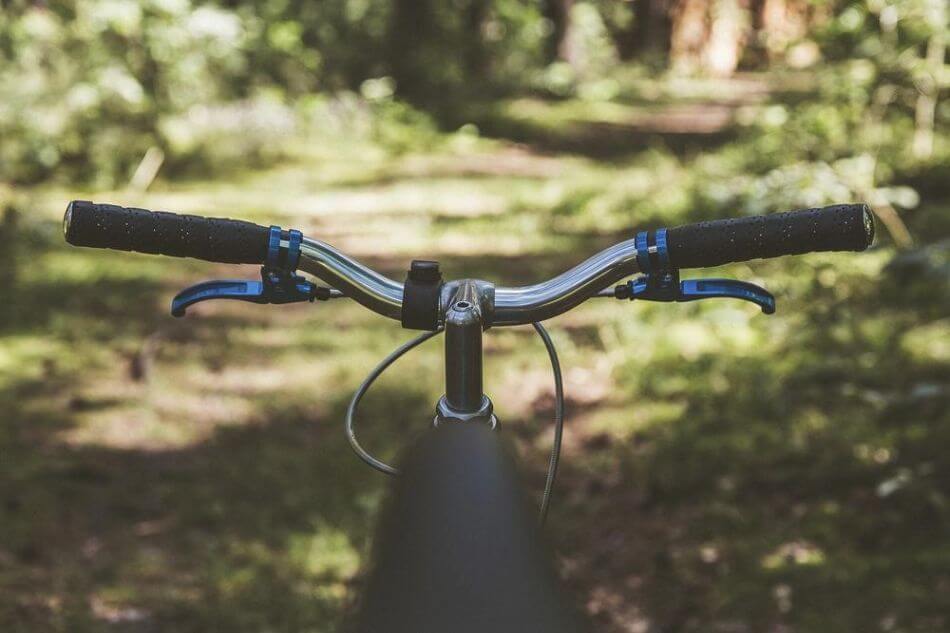
Riser bars are relatively flat handlebars that rise up from the center point to make for a more upright riding position. Each model has its own amount of rise which can be anywhere from 20 to 40mm+. The ends of the bars are closer to riders’ hands which means they can ride in a comfortable posture that doesn’t put as much strain on their back and arms.
Riser bars are most popular among mountain bikes, fixies, and urban-oriented bikes designed to be nimble as well as comfortable.
Bullhorns

One of the most recognizable handlebar shapes is bullhorn bars. As you may have guessed, they get their name from the flared bar ends that look like the animal part. The unique aesthetic has made these aggressively cool handlebars popular among the fixie crowd and young riders trying to score some style points.
This bar design most likely has its origins in track cyclists as they are very similar to traditional pursuit handlebars. The limited hand positions and stretched-out riding position encourages an aerodynamic profile that cuts through the air, perfect for racing around a velodrome. Nowadays, the speedy look seems to never go out of style.
Drop Bars
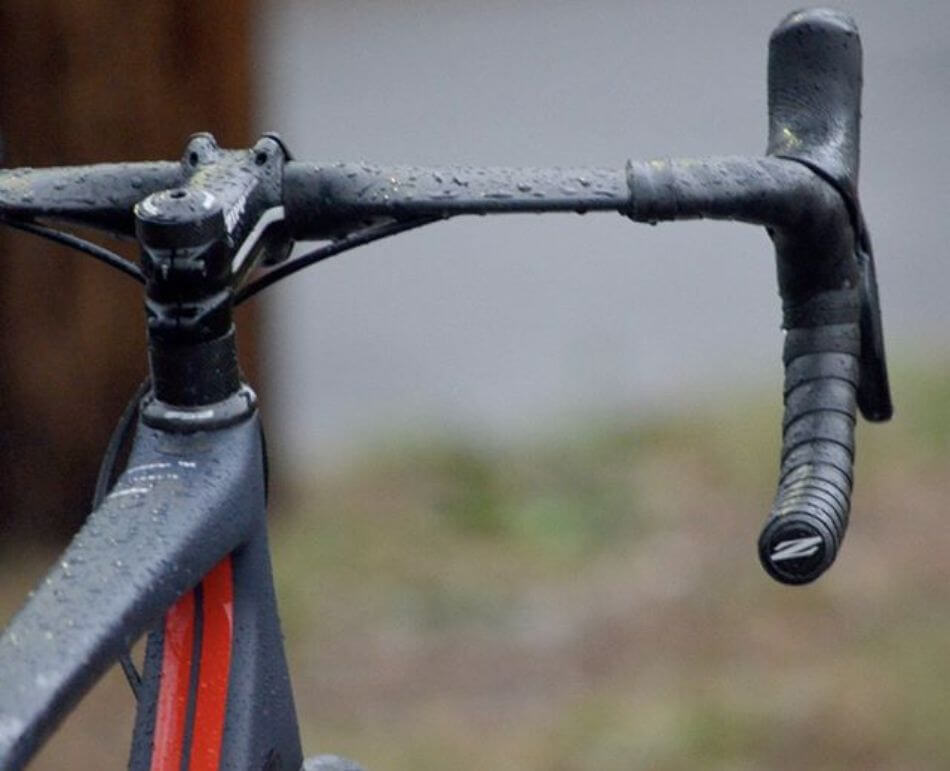
Drop bars are road-oriented handlebars with a genius design that combines comfort, speed, and aerodynamics. Drop bars splay out from the stem as flat bars but then curve downwards in a large “C” or “D” shape. This unique layout allows riders to use three main hand positions where the hands are…
- on the flat, central part: this is a relaxed position with hands resting near the center of the handlebars
- on the hoods: riders place their hands on top of the handlebar curve and with slightly more reach, this shoulder-width position gives immediate access to the brake and shift levers
- gripping the bottom bar ends: this more extreme, aerodynamic position is used for sprinting or fast descending
Standard Drop Bars
Standard drop bars are typically seen on road bikes and are a large part of their signature look. Conventional drops can vary in width from 38cm up to 44cm depending on the broadness of the rider’s shoulders. Brake and shifter levers are mounted at the top of the handlebar’s curve and there is normally bar tape or grips to increase hand comfort.
Track Drop Bars
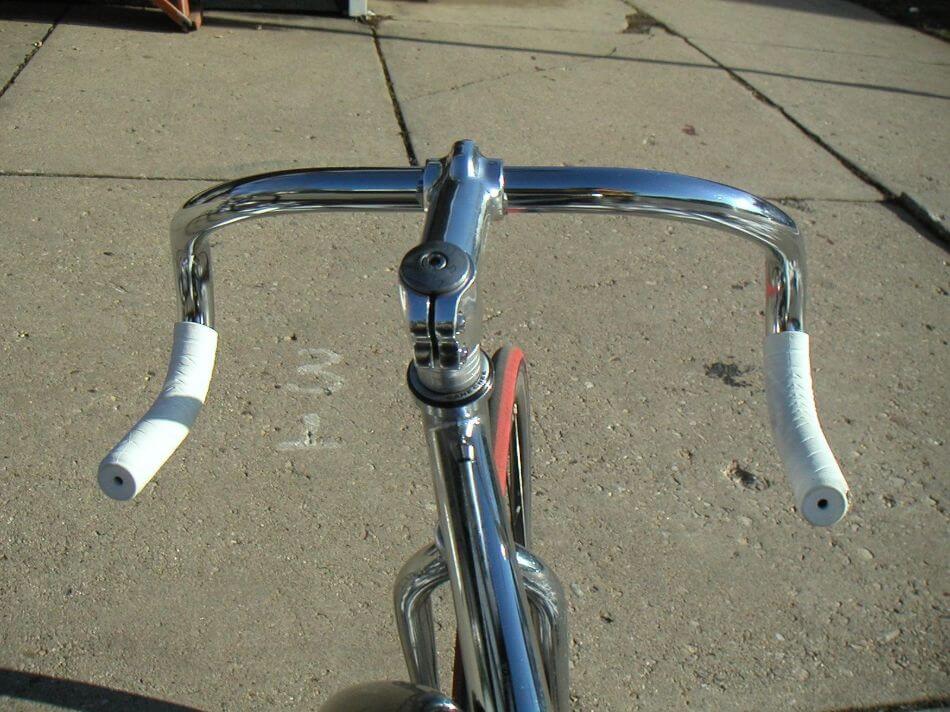
Track bars have a recognizable gradual curve to them and are designed to be gripped in the lower drops to achieve the most aerodynamic position. While the majority of track bars are only used inside dedicated velodromes, many fixie enthusiasts ride around the city with speedy track bars. A traditional track bar won’t have brakes but are compatible with brake and shift levers.
Flared Drop Bars
One of my favorite sub-categories of drop bars is flared drop bars built for additional comfort and better handling. Often, riding in the drops is reserved for aerodynamic riding in a straight line and comes at the expense of hand comfort. By flaring out the drops, there is a more ergonomic hand position and wider handlebar to offer more maneuverability.
These advantages make this bar type popular among gravel riders that navigate bumpier technical terrain. Check out the “Cowbell” or “Cowchipper” models from gravel-specialist brand Salsa Cycles for great examples.
Cruiser Bars
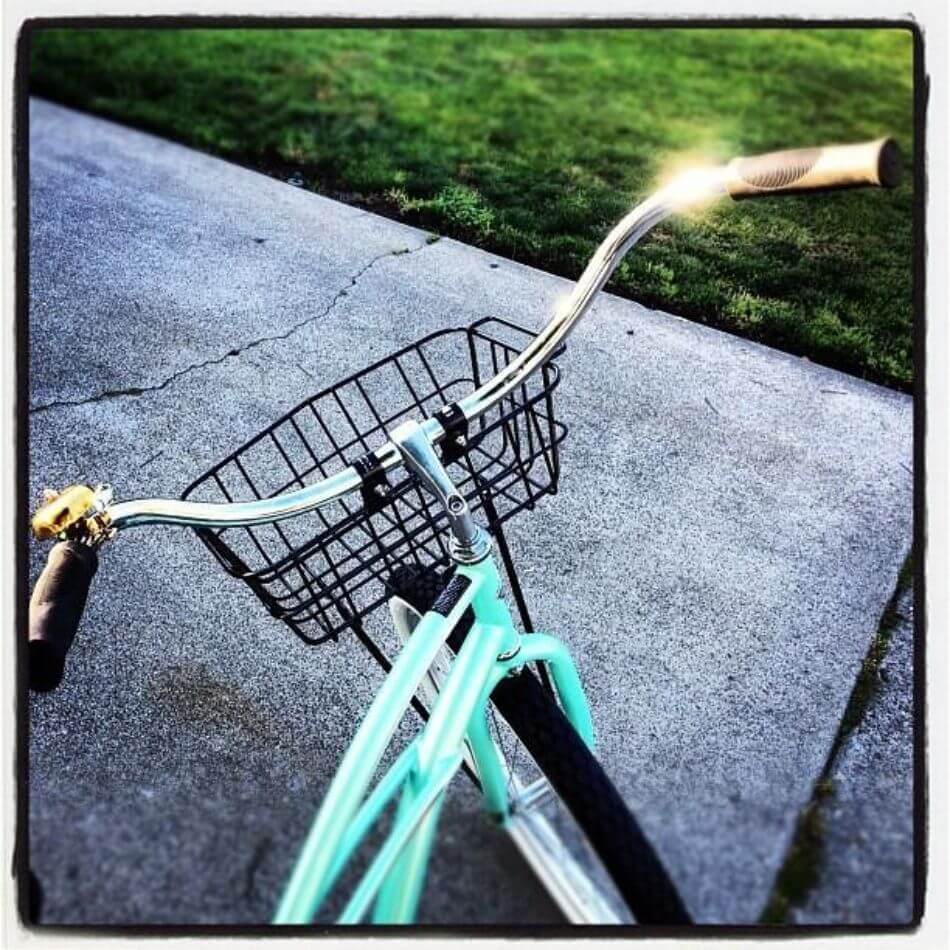
Cruiser bars are some of the most comfortable handlebars that can be installed on a bike. This type of bar features a wide flat bar that curves up and back towards the rider so they can easily grab it without leaning over. This way, they can pedal with a comfortable, upright posture and steer the bike a bit like a bus steering wheel for added control.
Butterfly Bars
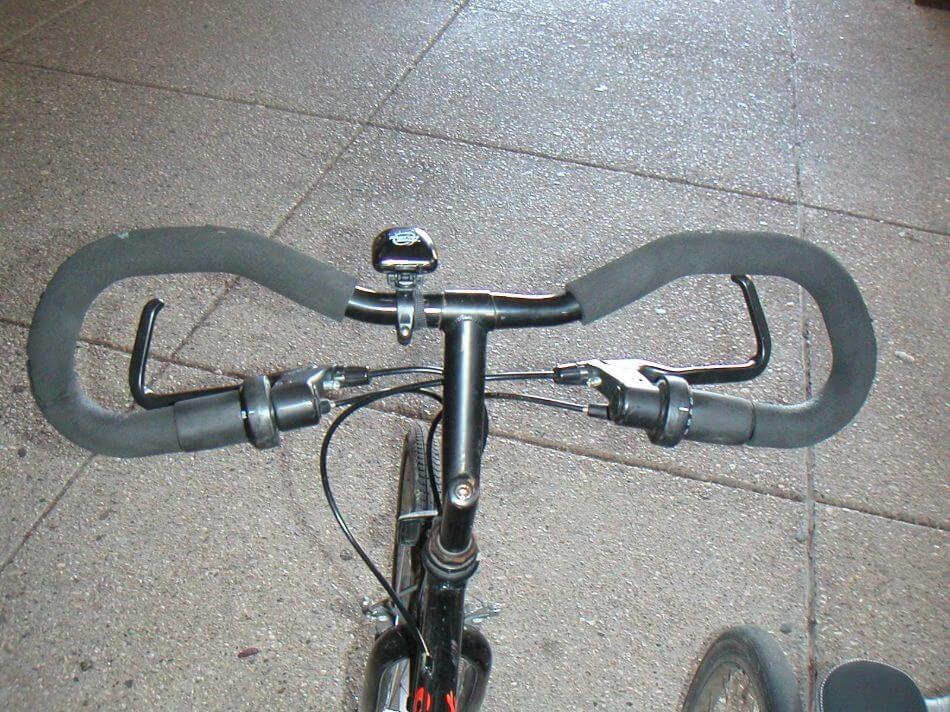
These days, butterfly bars and their unique design are a rare sight. Originally made for touring or extended bike treks, these bars wrap around the stem and form a butterfly silhouette with its many curves and angles. This complicated shape comes with a ton of hand positions so riders can switch up their grip and prevent strain during long tours.
These large handlebars get even bigger with the addition of foam padding that was used to boost comfort, but they do allow for great control of a heavy trekking bike loaded with cargo. Nowadays, you’ll only see these outdated bars on old touring or exercise-oriented bikes that are still on the trails or, more likely, sitting in someone’s garage.
BMX Bars
BMX bars are one of the most distinct bar shapes that most people are familiar with. Popular on professional BMX models as well as many kids bikes, these bars are essentially very tall riser bars with a support brace in the middle. That central beam, as well as the hefty stem, is built to withstand the extra torque riders place on their bikes while doing jumps or tricks.
Aero or TT Bars
Some of the most innovative and wacky designs come from aerodynamic and time-trial handlebars. These bars are constructed with one goal in mind: speed. The handlebars force riders to rest on their forearms and assume a forward-leaning tuck to cut through the air and reduce drag. This awkward position has great advantages for speed and aerodynamics, but can make the bike difficult to steer and uncomfortable if you are unaccustomed to the posture.
There are also clip-on aero bars that can be installed on standard road drop bars so you can achieve an aerodynamic position without buying a whole new handlebar setup. These clip-on models as well as normal aero bars are common in road time trials and triathlon races where wins can be decided by mere seconds.
Carbon Fiber Handlebars
Back in the day, most handlebars were made out of steel or aluminum, but carbon fiber is increasingly becoming the go-to choice for performance bikes. Its lightweight and stiff characteristics make carbon handlebars ideal for saving grams and improving power transfer. Some advanced carbon layups can even make the bars compliant vertically to absorb road buzz yet rigid laterally to maintain stiffness.
One-Piece Handlebars
Carbon fiber allows for the handlebars and stem to be integrated into a single unit. This locks in the stem length and handlebar width since either part can’t be changed without the other but increases the stiffness in the front area of the frame. This clean look and extra performance is common among the pro peloton.
Can Handlebars Snap?
Handlebars are subject to serious forces and the stem area can be a bottleneck for the energy absorbed during a crash or impact. Think about when your bike hits a pothole or a tree root— all that force travels from the front wheel, through the fork and steerer tube, and to the handlebars and stem.
For this reason, handlebars can break or snap in certain situations. Carbon fiber is more brittle than aluminum or steel, so it’s important to be familiar with the material. Over-tightening carbon handlebars at the stem can cause them to snap in extreme situations, but higher quality carbon these days and installation by a professional ensures a safe connection.
Are Carbon Fiber Handlebars Safe?
Modern handlebars made of carbon fiber are plenty safe and have many advantages over their metal counterparts. That said, it’s important to secure the handlebars to the stem with the appropriate amount of torque. Too tight and the carbon could snap while under load, and no cyclist wants that.
You May Also Like:
Buyer’s Guide to Choosing Bicycle Handlebars
Which Handlebar Is Right for My Riding Style?
Some handlebars just simply don’t work with certain bikes, so a large part of the decision is already made for you! Handlebar compatibility depends on things like the type of shifters and brakes on your bike as well as the frame design. This is the reason why, for example, you won’t ever see a set of drop bars on a downhill mountain bike.
Fine-Tuning to Match Riding Preferences
If you are getting new handlebars, they will be a slight variation on the handlebars you already have in order to better match your preferences. Features you can adjust include handlebar width, material, and angles like handlebar rise or sweep.
Think about your current handlebars and how they make you feel while riding. Do you wish you weren’t as bent over? Or do you want to lean more forward in an aerodynamic position? Check out the diversity of designs and see which one fits the bill. I recommend going in-store and going hands-on to understand the complete shape of the new handlebars.
Measure! Handlebar size matters
Make sure you know the correct handlebar tube diameter that works with your bike’s stem. This guarantees a safe connection so the handlebar won’t get loose or snap because of being installed too tight, or simply not fitting. This measurement is non-negotiable and needs to be correct for a safe ride.
The most common tube diameters are 25.4mm and 31.8mm for modern “oversized” handlebars. Bust out those calipers for a measurement accurate down to tenths of a millimeter or head into your local bike shop for them to help you out.
Frequently Asked Questions
No, not all handlebars will be compatible with your bike’s stem, brakes, or shifters. Check the appropriate tube diameter to make sure the handlebar can be properly secured to the stem.
The crucial measurements of a handlebar include the tube diameter that’ll fit in your stem as well as the overall width that determines your hand placement on the bars.
To install new handlebars, you will need to remove all the parts attached to your current bars, take off the handlebars, then do the process in reverse with the new handlebars. You may need to replace things like cables or grip tape, but normally the swap can be down with the same parts as before.
No, there is not a single diameter shared across all handlebars. There are a few common tube diameters including 25.4mm and 22.2mm for older bars and 31.8mm for modern “oversized” standard handlebars.
Yes, wider handlebars are a great way to add comfort to your bike’s setup. Wide handlebars allow you to open up your arms and chest so you can sit more upright and give you extra leverage to maneuver the bike with less effort, but they aren’t as aerodynamic as narrower bars.

Jeffrey Brown is a writer, editor, and professional bike mechanic with over 7 years of experience working in full-service and community-based bike shops. As a bicycle educator, he has supported youth programs across the US that teach bike mechanics and life skills to prepare the next generation of cyclists.
Jeffrey began his professional mechanic career at his university bike co-op, so he recognizes the grassroots power of the cycling community. Initially self-trained as a mechanic, his subsequent positions as manager and lead educator gave him official training. He has won various awards and grants for his role as a bicycle and environmental advocate.

